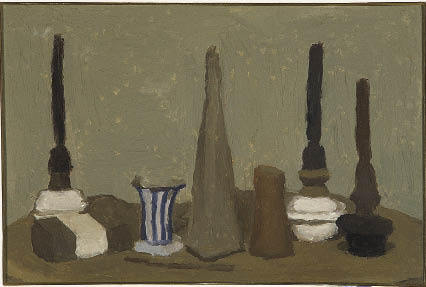Alberto Della Ragione (1892–1973) was a naval engineer from Genoa with a passion for music, poetry and the visual arts; he also had the collecting bug.
Alberto Della Ragione (1892–1973) was a naval engineer from Genoa with a passion for music, poetry and the visual arts; he also had the collecting bug. Towards the end of the 1920s, he sold his earlier accumulation of 19th-century paintings and began to acquire modern art, concentrating on works with a figurative bias, but by some of the most adventurous spirits then active in Italy.
He became friendly with the second generation Futurists — Fillia, Enrico Prampolini and Fortunato Depero — and bought their work, later turning to support a younger group of realist painters including Renato Guttuso, Giuseppe Santomaso and Renato Birolli. These artists were allowed a monthly stipend, and in exchange Della Ragione expected first refusal to purchase their works. This is the same arrangement that Kenneth Clark had with Victor Pasmore, and is an excellent way for the better-off to provide real support for struggling artists. Who does this now, I wonder?
Della Ragione collected art from deep personal conviction — there’s an endearing story of him blowing all his money on Modigliani’s 1919 self-portrait, cash he’d saved to buy himself a new apartment — and in the end his collection numbered some 241 items. In 1969 he donated them to the city of Florence. A selection of 38 key works, which highlight the engineer’s taste and acumen, is now on show in London. It is a lesson in enlightened patronage and demonstrates clearly how even moderate wealth can be used constructively to the long-term cultural benefit of society.
The exhibition is laid out handsomely in the two ground-floor galleries of the Estorick.








Comments
Join the debate for just £1 a month
Be part of the conversation with other Spectator readers by getting your first three months for £3.
UNLOCK ACCESS Just £1 a monthAlready a subscriber? Log in